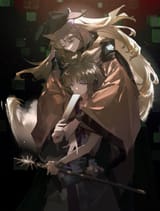Search Results
6/30/2025, 4:11:22 PM
I visited Chogosonji and Houryuji temples today.
The first one is known for featuring a lot of tiger-themed artwork and sculptures, and I believe they once held live tigers in there too. It also houses, or housed, a bit unsure about that, the Shikisan Engi Emaki. That picture story scroll inspired much of UFO's cast. It's a bit of a shame that the museum where it's is (was?) in is closed when I visited. But I was fortunate enough to witness some kind of a ritual dedicated to Bishamonten, who I believe is the main deity there. It was really powerful stuff. I've stumbled on couple of these kind of prayer rituals, but this was by far the most intense. The chanting turned into kind of shouting at one point.
Apparently the temple is so fascinated by tigers, because Bishamonten himself is said to made his first appearance in Japan there on the year of tiger during a day of the tiger and an hour of the tiger. So that's where Shou Toramaru's tiger Bishamonten thing comes from.
Horyuji had an extremely welcoming atmosphere which I found a bit surprising considering that it's this extremely old, dignified world heritage site. I learned that the Kuse Kannon, who is referenced to in one of Miko's spellcards, is housed in there in a "Hall of Dreams". This Kannon statue is said to be based on Prince Shoutoku himself. So the "Halo of Kuse Kannon" in Touhou is...Miko's own halo. The structure was hexagonal, and if I remember correctly, Miko's senkai is depicted as having a hexagonal central structure.
There was a temple that housed a statue of Shoutoku himself and you could pray to it (I did). They also gave out goshuin, which I got. The goshuin featured the same "hold harmony sacred", attributed to Shoutoku, that is also featued in Touhou.
The treasure hall had some interesting stuff. There was a sculpture of "Yumechigai Kannon", dream-changing Kannon that turns nightmares into pleasant dreams. One of the attendants explained it to me. I don't know why. He didn't talk to any other visitor, nor about any other item in display. Maybe he sensed that I was deeply interested in it. The art of the temple complex is so old that it featured some figures that have become kinda peripheral in Japanese Buddhism, like apsaras and the budhicised versions of Indra and Brahma,
The first one is known for featuring a lot of tiger-themed artwork and sculptures, and I believe they once held live tigers in there too. It also houses, or housed, a bit unsure about that, the Shikisan Engi Emaki. That picture story scroll inspired much of UFO's cast. It's a bit of a shame that the museum where it's is (was?) in is closed when I visited. But I was fortunate enough to witness some kind of a ritual dedicated to Bishamonten, who I believe is the main deity there. It was really powerful stuff. I've stumbled on couple of these kind of prayer rituals, but this was by far the most intense. The chanting turned into kind of shouting at one point.
Apparently the temple is so fascinated by tigers, because Bishamonten himself is said to made his first appearance in Japan there on the year of tiger during a day of the tiger and an hour of the tiger. So that's where Shou Toramaru's tiger Bishamonten thing comes from.
Horyuji had an extremely welcoming atmosphere which I found a bit surprising considering that it's this extremely old, dignified world heritage site. I learned that the Kuse Kannon, who is referenced to in one of Miko's spellcards, is housed in there in a "Hall of Dreams". This Kannon statue is said to be based on Prince Shoutoku himself. So the "Halo of Kuse Kannon" in Touhou is...Miko's own halo. The structure was hexagonal, and if I remember correctly, Miko's senkai is depicted as having a hexagonal central structure.
There was a temple that housed a statue of Shoutoku himself and you could pray to it (I did). They also gave out goshuin, which I got. The goshuin featured the same "hold harmony sacred", attributed to Shoutoku, that is also featued in Touhou.
The treasure hall had some interesting stuff. There was a sculpture of "Yumechigai Kannon", dream-changing Kannon that turns nightmares into pleasant dreams. One of the attendants explained it to me. I don't know why. He didn't talk to any other visitor, nor about any other item in display. Maybe he sensed that I was deeply interested in it. The art of the temple complex is so old that it featured some figures that have become kinda peripheral in Japanese Buddhism, like apsaras and the budhicised versions of Indra and Brahma,
Page 1
